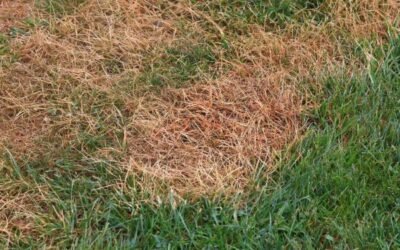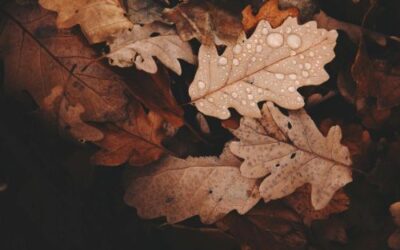Late summer in Central Virginia can feel relentless – hot, humid, and full of fast-growing weeds taking advantage of weakened lawns. By August and September, names like Virginia buttonweed, doveweed, plantain, chickweed, and groundsel may already be making themselves at home in your turfgrass, thriving in the heat and crowding out the grass you spent spring nurturing.
At Jack’s Lawn Care & Landscaping, we know timing and technique matter. Here’s your expert guide to finishing the season strong – with fewer weeds, healthier grass, and a lawn you can enjoy all fall long.
1. Understand Which Weeds You’re Fighting Now
Late summer brings both annual and perennial weeds. Annuals like chickweed and corn speedwell sprout, bloom, and seed rapidly in damp, compacted areas. Groundsel, also called common groundsel, is a fast-multiplying annual that can seed multiple generations before frost strikes. Perennials such as Virginia buttonweed, lespedeza, doveweed, and plantain root deep and persist into next year if left untreated.
Knocking out both types now helps you avoid seed spread and root regrowth later.
2. Apply Post-Emergent Herbicides While Weeds Are Actively Growing
Even in late summer, when the heat is high, as long as weeds are actively growing, post-emergent treatments still work effectively. Selective broadleaf herbicides are ideal for targeting plantain, lespedeza, doveweed, and other broadleaf invaders in lawns. Wait until late afternoon or earlier in the morning on mild, wind-free days to spray. Avoid applying during the hottest midday hours to minimize the risk of scorching or vapor drift.
3. Hand-Pull or Mechanically Remove Isolated Patches
Smaller infestations of shallow-rooted weeds – like chickweed, corn speedwell, or groundsel – can often be gently pulled by hand, especially when the soil is damp. Use a weeding tool to ensure you remove as much root as possible. Mechanical removal is especially helpful in garden beds, mulched edges, or tight corners where herbicide use may be limited.
4. Mow Smart and Water Deeply
Mowing at a taller height (around 3 inches for cool-season grasses common in Central Virginia) allows grass to shade the soil, reducing weed seed germination and helping soil retain moisture longer in hot weather. Water your lawn deeply and infrequently (about 1 inch per week) to promote deep root systems in your turf – strong roots help resist weed invasion.
5. Aerate, Overseed, and Topdress Where the Lawn Is Thinning
Thin or patchy turf is an open invitation to weeds like plantain and groundsel. Late August is still a good window to aerate cool-season grass, especially if you haven’t done it earlier in spring or summer. Follow that with light topdressing (compost or quality topsoil) and overseeding to fill in gaps before fall sets in. A thicker, dense lawn crowds out weeds naturally.
6. Mulch Beds and Borders Aggressively
In flower beds, shrubs, and the edges of turf areas, a fresh 2-4-inch layer of organic mulch (wood chips or pine straw) helps suppress weed emergence by blocking light and depriving seeds of the open soil they crave. Mulch also retains moisture and improves soil health as it breaks down. Be sure to replenish older mulch layers now before weeds gain a foothold.
7. Consider Cover Crops or Companion Planting
For bare spots in landscape beds or vegetable gardens, plant groundcovers such as clover, creeping thyme, or alyssum. These fill in the space and act as living mulch – blocking weed seeds from germinating, retaining moisture, and attracting beneficial insects.
8. Avoid Late-Summer Pre-Emergents If Overseeding Soon
Pre-emergent herbicides can prevent crabgrass and annual bluegrass – but they interfere with seed germination if you plan to overseed lawns in late summer or fall. Instead, focus on hand-removal, post-emergent herbicides, mowing, and overseeding first – then apply a pre-emergent in early fall once new grass has established if needed.
9. Target Stubborn Weeds Like Crownbeard and Creeping Charlie
Yellow crownbeard emerges in late summer and can grow tall and prolific, especially in sunny disturbed spots. Hand pulling is difficult – target it early with post-emergent herbicide before heavy blooming occurs. Creeping Charlie (ground-ivy) thrives in shaded damp areas, with rhizomes that resist simple pulling. Treat with a selective herbicide timed to when foliage is active, and consider adding mulch or shade-tolerant groundcovers to suppress regrowth.
10. Schedule Follow-Up Inspections and Treatments
Late summer weed control isn’t a one-and-done. Set reminders to revisit applied areas in 2-3 weeks to check for re-sprouts or residual patches. Retreat as needed. Observing how your lawn responds helps you plan fertilization, overseeding, and aeration for early fall.
Why This Matters in Central Virginia
Our humid summers and frequent rainfall create perfect conditions for weeds like Virginia buttonweed and plantain to spread. Once established, these tough perennials can persist into the next season and seed heavily. Managing them now helps prevent overwhelming infestations come spring. And with fall overseeding and fertilizer scheduled in coming months, weed suppression now maximizes new grass success.
Quick Summary of Late-Summer Weed Control Steps
- Identify what’s growing: Look for weeds like plantain, chickweed, buttonweed, groundsel, and crownbeard that are active in late summer.
- Apply herbicides wisely: Use post-emergent sprays when weeds are actively growing, ideally in the morning or evening to avoid heat stress.
- Pull what you can: Hand-pull small annuals like chickweed and speedwell after watering or rain for easier removal.
- Mow higher, water smarter: Keep your grass taller (around 3 inches) and water deeply once or twice a week to support strong roots.
- Strengthen thin areas: Aerate, topdress, and overseed bare or thinning patches to crowd out future weeds.
- Mulch garden beds: Add a 2-4 inch layer of mulch around shrubs and in borders to block sunlight and stop weed seeds from sprouting.
- Plant groundcovers: Fill bare soil with clover, creeping thyme, or other dense plantings to act as natural weed suppression.
- Delay pre-emergents if seeding: Skip pre-emergent weed killers if you’re about to overseed – those products can block grass seed from sprouting, too.
- Watch for re-growth: Revisit treated areas every 2-3 weeks to catch persistent weeds before they go to seed again.
- Prepare for fall: Use these weeks to set up for fall fertilizing, overseeding, and long-term weed prevention success.
Trust Jack’s Lawn Care & Landscaping for Weed Control That Works
Late summer weed control in Central Virginia demands attention to timing, method, and lawn conditions. At Jack’s Lawn Care & Landscaping, our approach pairs expert mowing, strategic irrigation, soil care, selective herbicide treatments, and overseeding to help you win the battle against stubborn weeds – before they take over.
Need help identifying or eliminating problem weeds like Virginia buttonweed, lespedeza, or creeping Charlie? We offer reliable, regionally tailored lawn care services throughout Charlottesville and Central Virginia. Whether you’re preparing for fall seeding or simply want to restore order to your overrun yard, we’re here to help!



